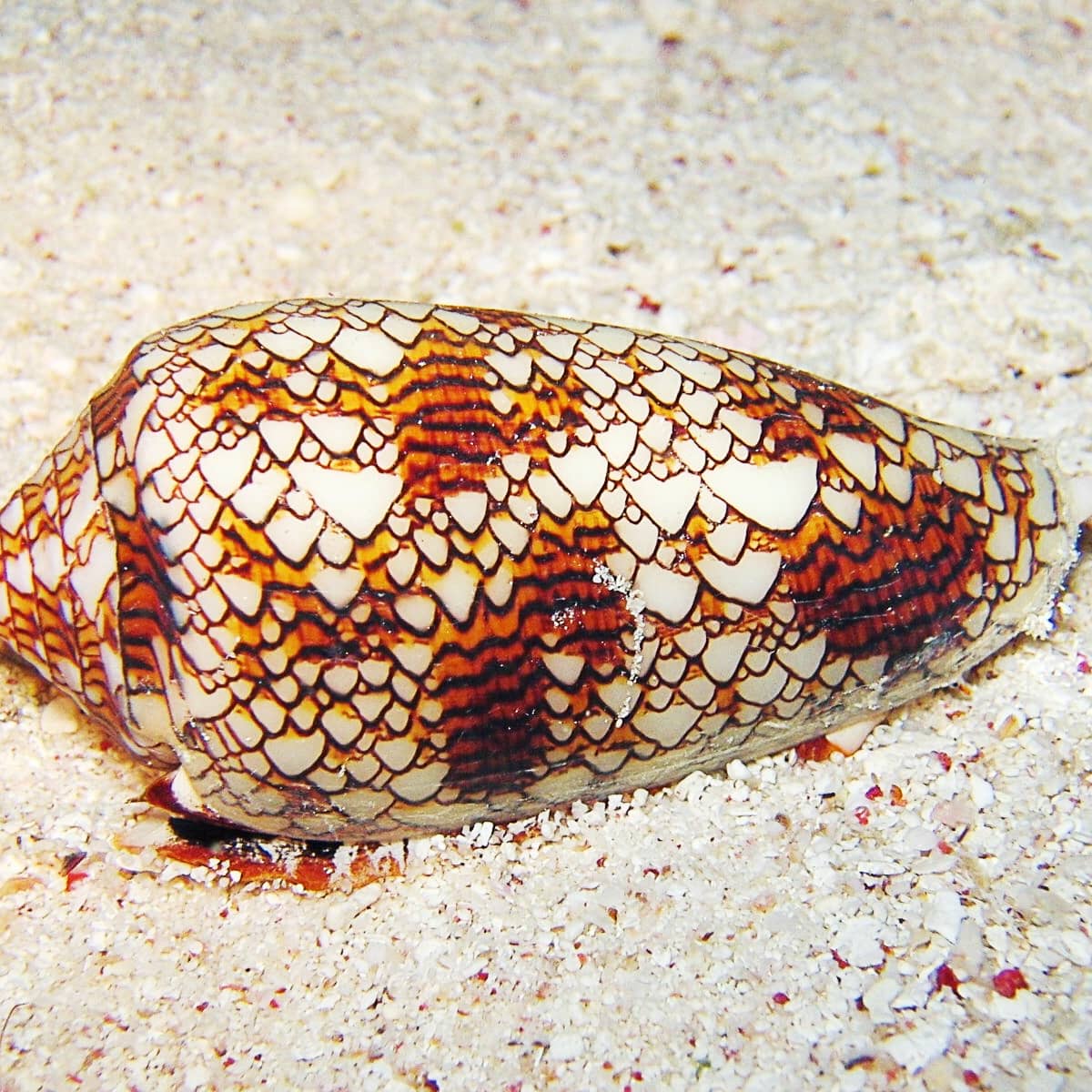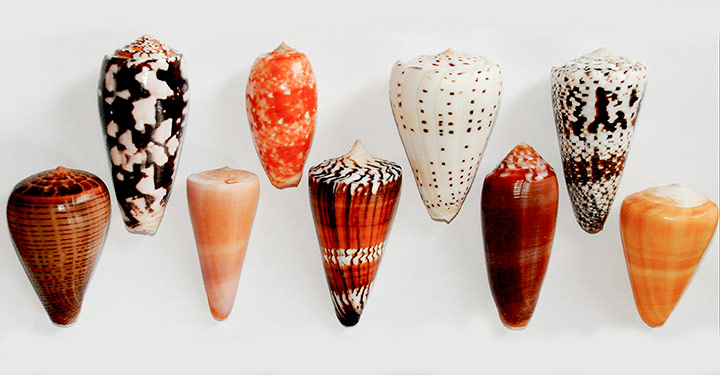
About
Cone snails are predatory marine snails classified in the genus Conus and family Conidae, which consists of over 500 species.1,2 They typically live in tropical waters, but can be found in warm waters off the coast of Florida.1,2 Cone snail species range in size and what they eat. Their diet primarily consists of mollusks and worms, but some of the larger species can prey on fish.1,2
Mechanism of Action
Cone snails have an appendage called a siphon, which they use to sense prey.1 They utilize a venom-covered tooth (also called a harpoon), which is propelled out of an appendage called a proboscis, to paralyze and capture prey.1
Check out this interesting video displaying the hunting process of a cone snail.
Toxicokinetics
The venom is made up of a variety of toxic peptides called conopeptides or conotoxins. These toxins target neurotransmitter transporters, ligand-gated ion channels, nicotinic receptors, G-coupled proteins, and calcium, sodium and potassium channels. Conotoxins are grouped according to their pharmacologic function.1,3 In general, the conotoxins help to paralyze the cone snail’s prey via neuromuscular blockade by different routes, affecting serotonergic, cholinergic, adrenergic and glutamate pathways.1
Figure 1 below illustrates the many conotoxins with their respective targets.

For more in-depth information regarding the different conotoxin structures and mechanisms, check out this link to a helpful article: Structural and Functional Analyses of Cone Snail Toxins3
Target Organs/Signs and Symptoms of Toxicity1
The target organ of conotoxins is ultimately the Central Nervous System. Signs and symptoms of toxicity may include:
Local (injection site)
- Pain
- Numbness
- Cyanosis
- Iscemia
- Necrosis
Systemic
- Sweating
- Weakness
- Generalized muscle paralysis
- Vision changes
- Cardiovascular collapse
- Respiratory failure
- Coma
Death can occur rapidly within five hours if untreated.
Treatments
It is most important to seek medical care at a hospital immediately if someone is exposed to cone snail envenomation. Imperative treatment will be protecting the person’s ABCs (airway, breathing and circulation). This can be accomplished by supportive therapies and mechanical ventilation, which are paramount to potential survival. Pressure immobilization can be utilized in an attempt to prevent spread of the venom.1
Because of the multitude of conotoxins and the multiple pathways that they can target, there is no anti-venom or treatments available at this time .1 Unfortunately, even if a person seeks medical attention, death may still occur.1
More than 30 cases of cone snail envenomation before 1970 have occurred based on military medical records.4
If you would like to read about how cone snail venom could potentially be utilized in medicine, check out this article: How the Cone Snail’s Deadly Venom Can Help Us Build Better Medicines5
In The News
Check out these articles from exposures to cone snails that made the news in recent years. Article 1 Article 2

References
- Kapil S, Hendriksen S, Cooper JS. Cone Snail Toxicity. [Updated 2021 Jul 18]. In: StatPearls [Internet]. Treasure Island (FL): StatPearls Publishing; 2021 Jan-. Available from: https://www.ncbi.nlm.nih.gov/books/NBK470586/
- Britannica, The Editors of Encyclopaedia. “Cone shell”. Encyclopedia Britannica, 29 Jul. 2013, https://www.britannica.com/animal/cone-shell. Accessed 26 July 2021.
- Morales Duque H, Campos Dias S, Franco OL. (2019). Structural and Functional Analyses of Cone Snail Toxins. Mar Drugs. 17(6):370. Published 2019 Jun 21. doi:10.3390/md17060370
- Flomenbaum NE, Goldfrank LR, Hoffman RS, Howland MA, Lewin NA, Nelson LS (eds.). Goldfrank’s Toxicologic Emergencies (8th ed.). New York: McGraw-Hill. ISBN 978-0-07-143763-9.
- NIST. How the Cone Snail’s Deadly Venom Can Help Us Build Better Medicines. National Institute of Standards and Technology website. Published October 10, 2017. Updated July 26, 2021. Accessed July 26, 2021. https://www.nist.gov/news-events/news/2017/10/how-cone-snails-deadly-venom-can-help-us-build-better-medicines